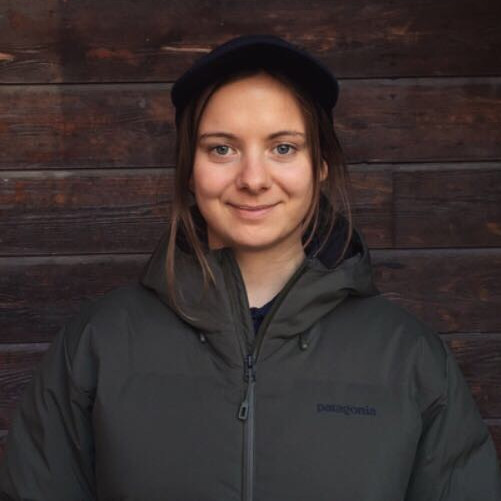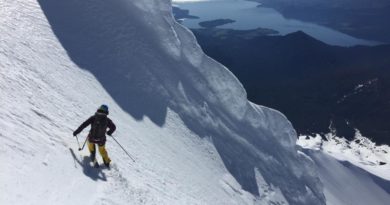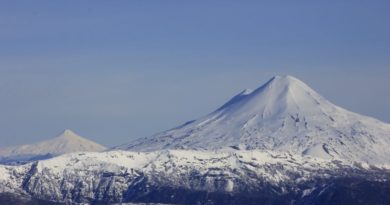Skiing The South Of Chile: A Collection Of Experiences
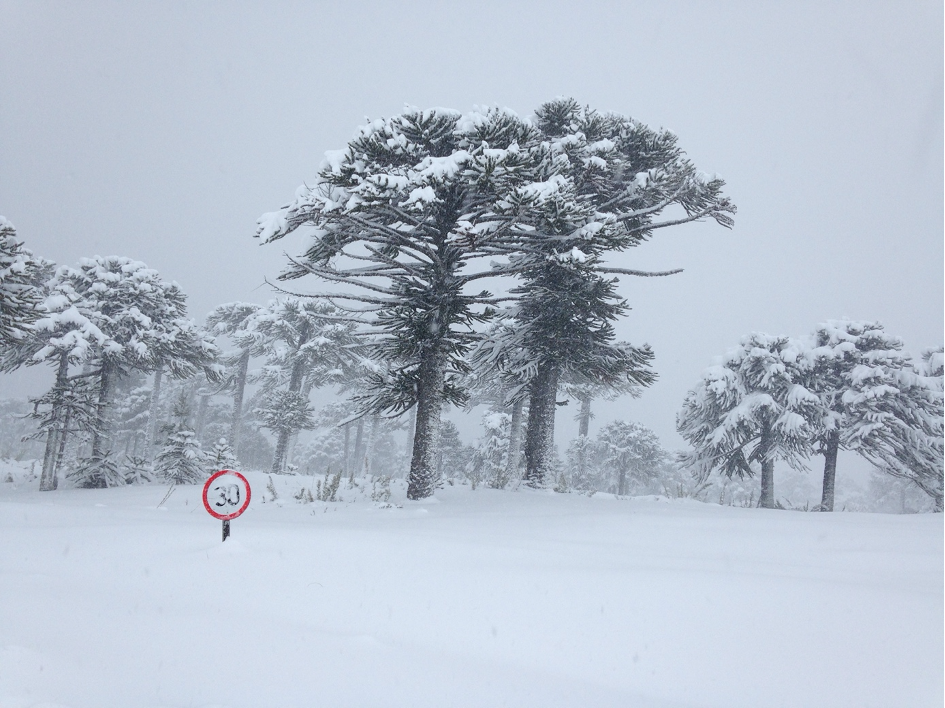
The snow has just arrived in time with semester break. It’s the second week of July and I will spend the next few weeks to explore the touring possibilities in the south of Chile. As I’m travelling down from Valparaiso towards Temuco, Curacautín, and then Malalcahuello the weather changes constantly, and the snow accumulates as we drive up towards Corralco, the ski resort based on the foot of the Volcán Lonquimay.
Traveling by bus works incredibly well in Chile. After curious looks towards my ski bag and jokes about the body of my boyfriend being transported in it, I am happy to be picked up by Chago, a longtime friend that I met in Canada a couple of years ago.

The next couple of days are filled with great touring days in the Valle Pehuenche and the whole area around Volcán Lonquimay. We celebrate the sight of a Condor with some Aprés Pisco Sours, and a soak in the nearby Termas, something one cannot miss when visiting the region. I also enjoyed skiing with other strong women like Nati Corail, a great splitboarder who runs a rental shop on the way to Corralco and also Andrea who works as a ski instructor and in a different trip showed me the best of Valle Nevado.
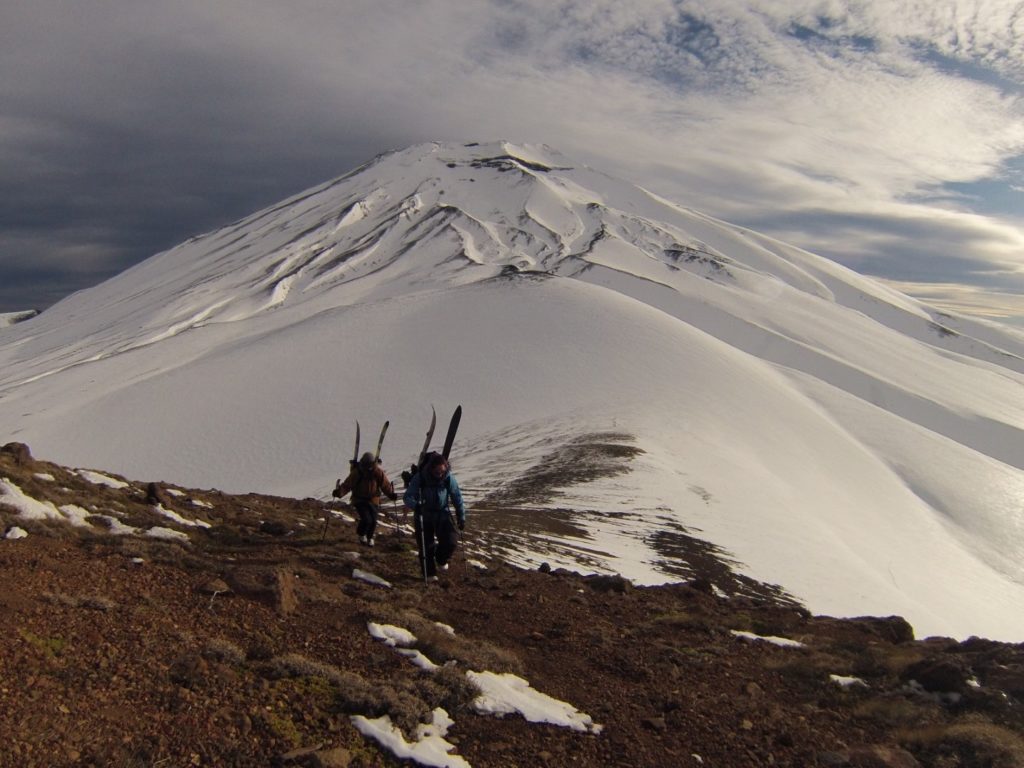
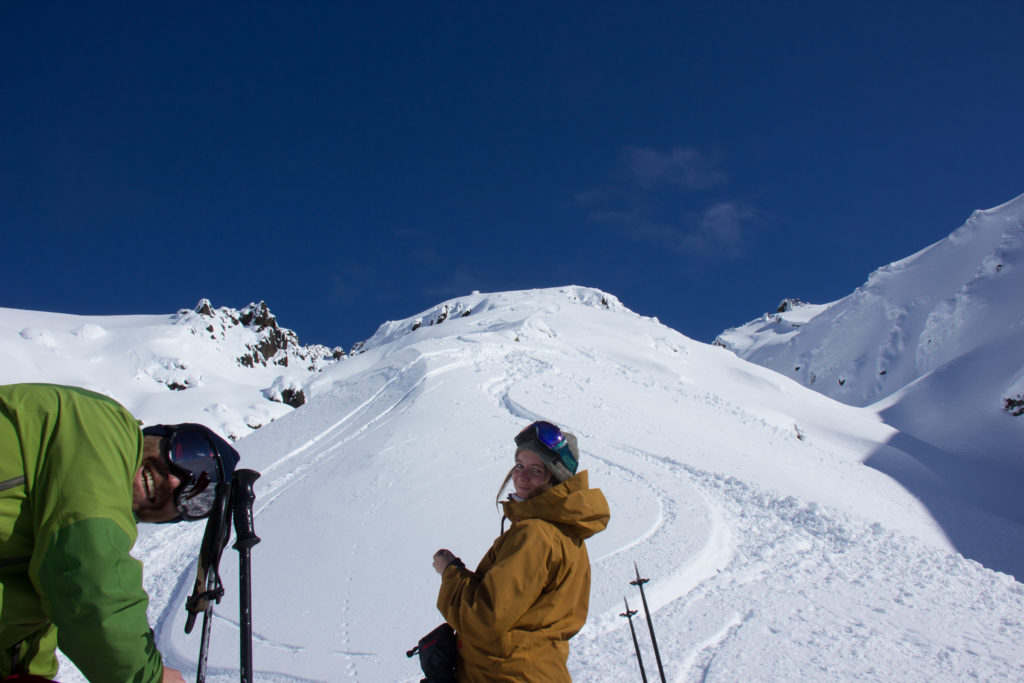
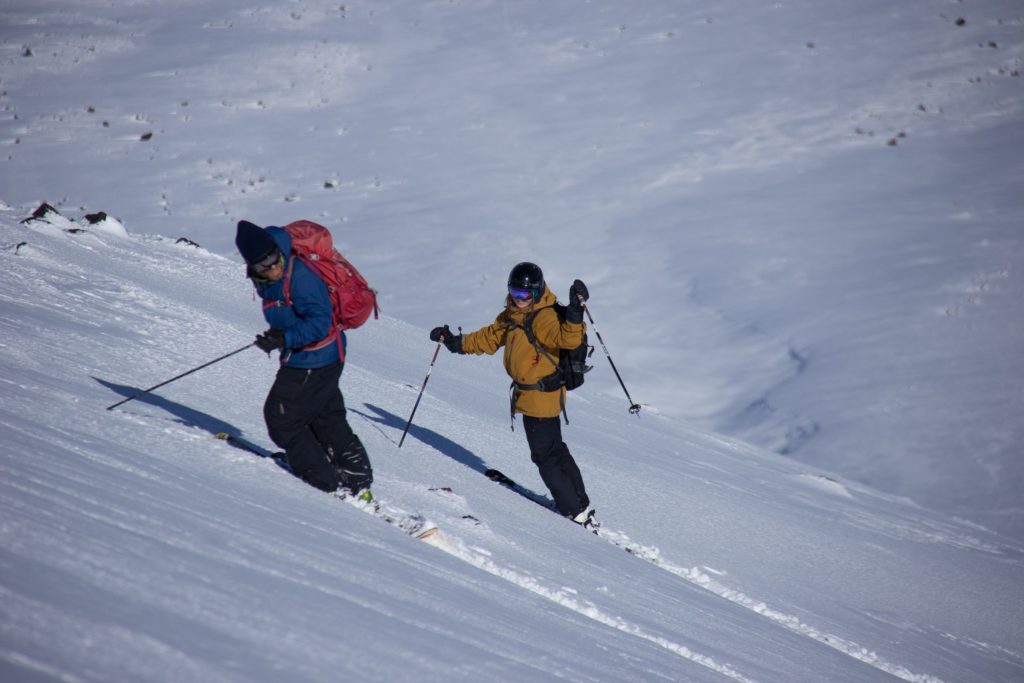
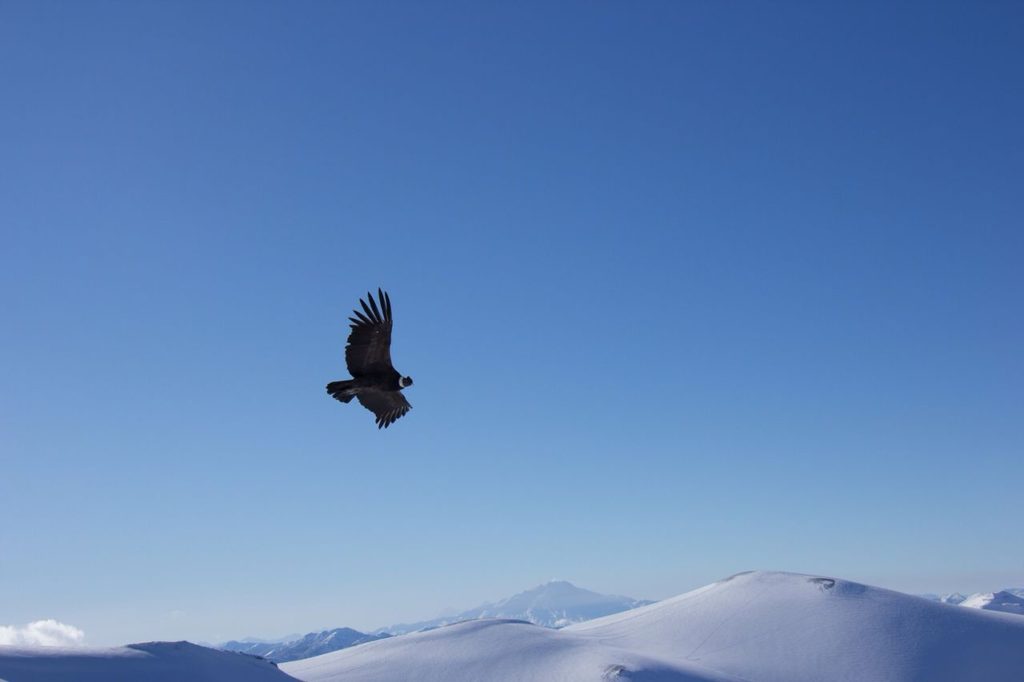
The way up to La Montura (Cerro Coloradito) a small peak next to Volcán Lonquimay shows us how windy it often gets in the Chilean mountains. Luckily, I only have to report the loss of my headband and Chago successfully grabs his ski just as it’s about to fly away.
One evening we drive out to Curacautín, a small town an hour away from Malalcahuello, to join a “Peña Cultural”. This was is an event with live music and awesome food where local speakers are protesting against the invasion of the Araucanía territory by energy, mining and logging companies, specifically against the construction of two hydroelectric projects in the Cautín River. The Mapuche people, the indigenous population of Araucanía Andina have been in a constant fight to protect the territory for more than 400 years. I am lucky to have great conversations with the locals and find out that the Chilean government started a series of military campaigns during the 19th century with the army under a process called “Pacification of Araucanía” (1861–1883) with the end goal of occupying the land to incorporate Araucanía to the chilean territory. Later, under the dictatorship of Pinochet Chile’s water rights were redistributed following a dubious and opaque process of privatization with the enactment of new legislation, disproportionally affecting the Mapuche, who depend on the rivers and consider them sacred. While the two hydroelectric projects were successfully cancelled later that year, the indigenous population of Chile still face discrimination and the Araucanía its one of the poorest regions in Chile. It is well worth spending some time to learn more about the cultural and historical background of this place!
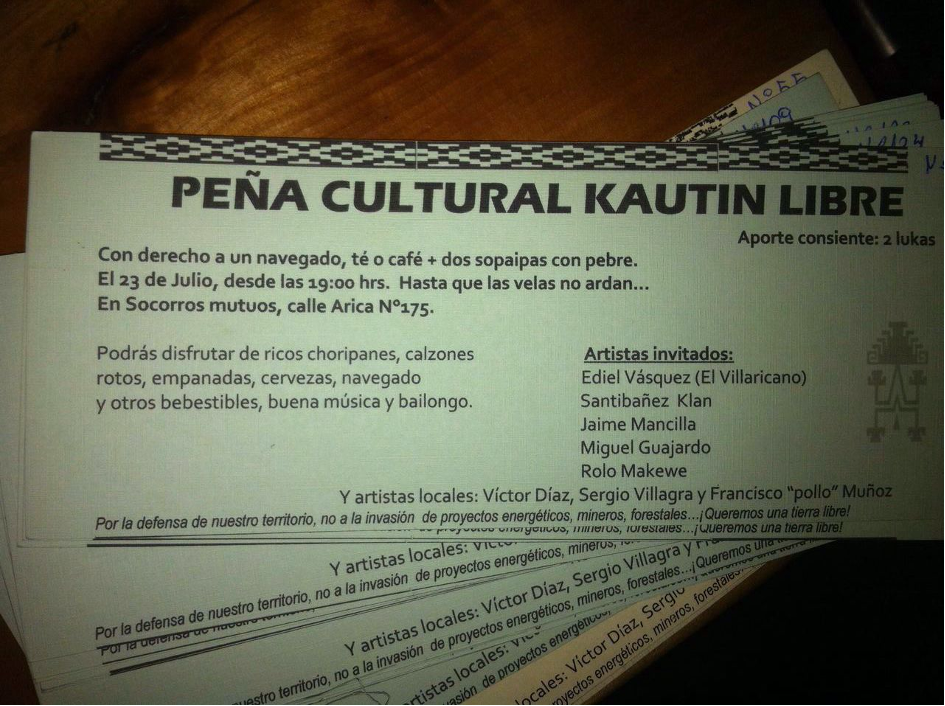


With the arrival of my sister, we continue our trip towards Pucón. Thanks to Andrea’s network we’re welcomed by Jorge and Juan (Señoret Brothers Expeditions), two local mountain guides, who are kind enough to host us in their remote cabin. It’s of immense value to have some locals to show you around, so the next day we start our first ascent toward Volcán Villarrica. The weather could be better, so we turn around after getting a great view on the area. In the next week we will participate in the “Avalancha en el Volcán” a freeride contest, consisting of the climb and descent of the famous Villarrica. We spend some nights camping at the foot of the Volcanoe, meet some crazy french skiers, and of course celebrate with a traditional asado after the event.
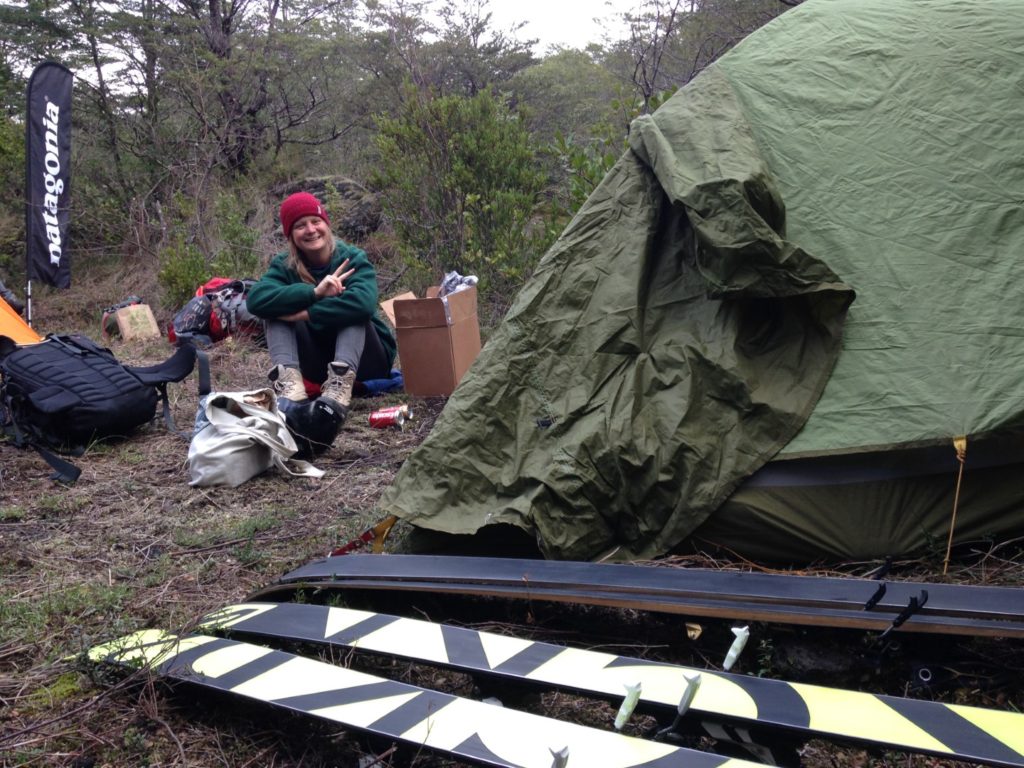
The last destination of the trip leads us to Bariloche in Argentina. We decide to spend some days on the famous Refugio Frey. The ascent to the refuge turns out to be more demanding than expected: due to the low snow level this year, we have to climb instead of tour the majority of the traverse to Punta Princesa. As we finally reach the hut by late afternoon, we are more than happy to try the Pizza made by the guys from Refugio Frey. Pizza has never tasted to good! (Pizza in Argentina; note for readers from Italy).
The next couple of days we travel with the sun and ski several lines around the bowl that opens up from the lake of Refugio Frey.

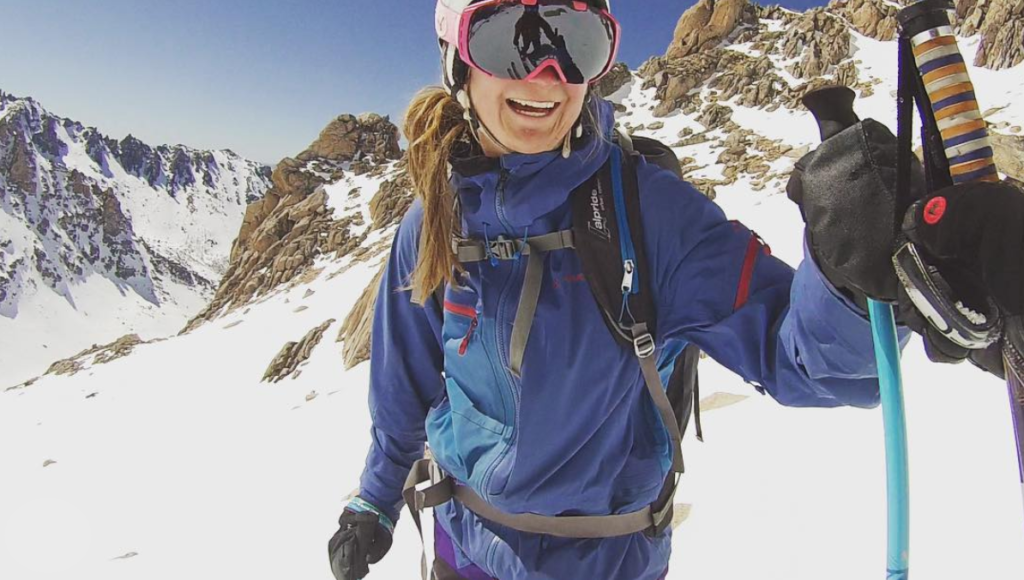
Later in the season I will forward my experiences to my parents, who have come to ski some volcanoes with a bunch of friends. Entering national parks and getting the allowance to ascend volcanoes proves to a challenge in some cases. Following a tragic accident on the Villarica in the same year, the local “guardaparques” have naturally become more critical towards tourists planning to ascend the volcanoes. Despite minor obstacles we enjoy the last couple of weeks of the chilean spring season and ski some of the best corn snow!

